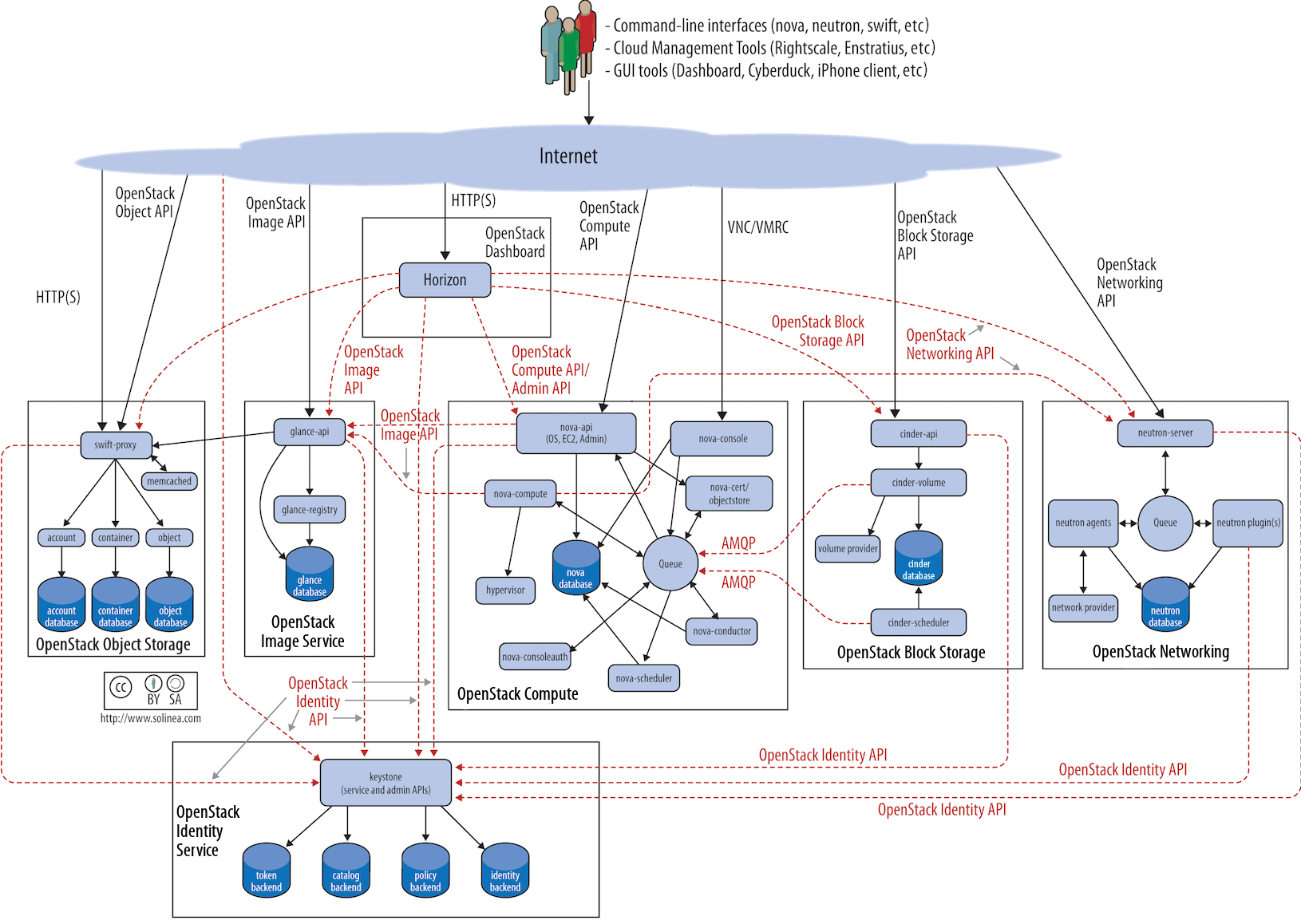This patch: - renames all the RST files in the ops-guide folder to use a hyphen instead of underscore; - adds redirects to the renamed files to .htacces; - removes /([a-z-]+) from Admin Guide redirects in .htacces. Change-Id: I4c35a4c89ae9900a2e9bfe1a7a3bcb94ab72454b Implements: blueprint consistency-file-rename
1.6 KiB
Architecture
Designing an OpenStack cloud is a great achievement. It requires a robust understanding of the requirements and needs of the cloud's users to determine the best possible configuration to meet them. OpenStack provides a great deal of flexibility to achieve your needs, and this part of the book aims to shine light on many of the decisions you need to make during the process.
To design, deploy, and configure OpenStack, administrators must understand the logical architecture. A diagram can help you envision all the integrated services within OpenStack and how they interact with each other.
OpenStack modules are one of the following types:
- Daemon
-
Runs as a background process. On Linux platforms, a daemon is usually installed as a service.
- Script
-
Installs a virtual environment and runs tests.
- Command-line interface (CLI)
-
Enables users to submit API calls to OpenStack services through commands.
As shown, end users can interact through the dashboard, CLIs, and
APIs. All services authenticate through a common Identity service, and
individual services interact with each other through public APIs, except
where privileged administrator commands are necessary. logical_architecture shows
the most common, but not the only logical architecture for an OpenStack
cloud.
arch-examples.rst arch-provision.rst arch-cloud-controller.rst arch-compute-nodes.rst arch-scaling.rst arch-storage.rst arch-network-design.rst
